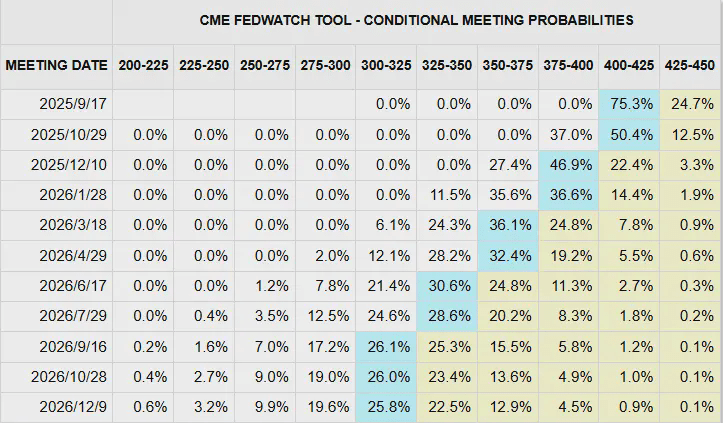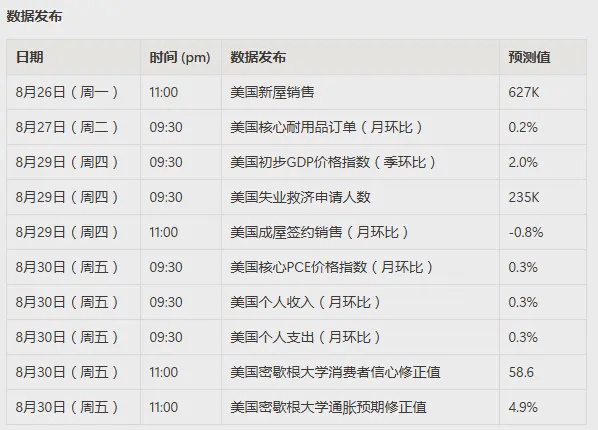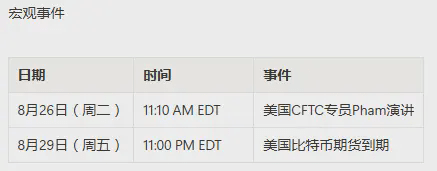The Federal Reserve is shifting from a flexible inflation target to strict 2% control, prioritizing price stability. With current inflation exceeding targets and tariffs adding uncertainty, the urgency for a September rate cut is decreasing. Powell's speech tonight may lean hawkish, emphasizing data dependence, and the crypto market needs to pay attention to changes in liquidity expectations.
One, The Federal Reserve's New Monetary Policy Framework: A Key Shift from 'Flexible' to 'Strict'
For the crypto market, the Federal Reserve's monetary policy directly influences global liquidity expectations, and this framework adjustment is a core premise for assessing future funding conditions. The main changes in the new framework focus on four dimensions:
1. Inflation Target: Saying goodbye to FAIT, anchoring to a strict 2% target
The flexible average inflation target (FAIT) introduced in 2020 was originally designed to address the low inflation and low growth environment post-2008—allowing inflation to moderately exceed 2% to compensate for the prior low inflation phase. However, with inflation surging after the pandemic in 2022, the limitations of this framework were thoroughly exposed: it directly delayed the Federal Reserve's response to inflation in 2021.
Currently, under the pressure of tariffs pushing up prices, the new framework is likely to abandon or downplay FAIT, re-emphasizing a 'strict 2% inflation target'. Powell has clearly stated that 'the wording from 2020 has become ineffective due to high inflation', and this statement directly suggests that the Federal Reserve will revert to a traditional inflation targeting regime to avoid long-term inflation expectations becoming unanchored.
2. Dual Mandate: Prioritization of Price Stability Rises
The 2020 framework previously prioritized 'broad and inclusive' employment goals, as at that time the Federal Reserve believed 'a strong labor market would not necessarily lead to inflation'. This judgment stemmed from the experience that low unemployment prior to the pandemic did not push up prices.
However, recent data has broken this perception: the annualized inflation rate in June 2025 reached 2.7% (partly driven by tariffs), with job additions in July only 73,000 (the previous value was also revised down), and although the labor market remains robust, there are signs of cooling. Powell has repeatedly emphasized that 'price stability is a prerequisite for the labor market to realize its potential', clearly conveying the signal that 'the priority of inflation control is rising'.
3. Responding to Uncertainty: 'Wait-and-see' stance under tariffs
The Trump administration's tariff policy poses dual risks: it may push up inflation while also suppressing economic growth, potentially leading to 'stagflation' (high inflation, high unemployment, low growth). Powell noted that the impact of tariffs on prices 'could be a one-time increase or could evolve into persistent inflation', and the specific effects still need to be observed.
From the July Federal Reserve meeting minutes, policymakers generally hold a cautious attitude towards the impact of tariffs, tending to 'wait for more data before acting'. This 'wait-and-see' position will permeate recent policy decisions.
4. Framework Review: Retaining the 2% Target, Simplifying Communication
The Federal Reserve is advancing a five-year framework evaluation, ensuring that the framework remains 'robust and effective' under different economic environments through 'Fed Listens' activities, research meetings, and FOMC discussions. Ultimately, the new framework will retain the 2% inflation target but may simplify policy tools and communication methods (such as adjusting the presentation of the 'dot plot').
Powell's speech tonight will be a key occasion to elaborate on these changes, and it is expected to emphasize the decision-making logic of 'flexibility' and 'data-driven'.

Two, September Rate Cut Under the New Framework: Factors Supporting and Opposing Pulling
The Federal Reserve's rate cut decisions directly impact market liquidity, especially critical for the funding situation in the crypto market. Currently, the possibility of a September rate cut is being pulled back and forth by opposing factors:
Three Major Factors Supporting September Rate Cut
Signals of Cooling in the Labor Market: July job additions were only 73,000, with the previous value revised down, and with the unemployment rate remaining at 4.1% (close to full employment but showing signs of weakness), indicating some easing of labor market pressures, providing some space for a rate cut.
Strong Market Expectations: Based on federal funds futures data, the market currently expects a 70%-83% probability of a 0.25% rate cut in September, reflecting market expectations of 'Federal Reserve support for employment', which will also exert some pressure on policy decisions.
Calls for Easing Within the FOMC: At the July meeting, committee members Waller and Bowman clearly supported a rate cut, indicating a tendency for easing within the committee. If subsequent data further weaken, it may lead more committee members to shift towards supporting a rate cut.
Three Major Resistances Against September Rate Cut
Inflation Continues to Exceed Target: The annualized inflation rate in June was 2.7%, significantly higher than the 2% target, and tariffs are still pushing up prices of certain goods. Powell is concerned about 'long-term inflation expectations becoming unanchored' and currently leans towards maintaining restrictive policies to control inflation.
Uncertainty Around Tariff Impact: It remains unclear whether the impact of tariffs on inflation is 'one-time' or 'persistent'. If the Federal Reserve cuts rates too early, it may exacerbate inflationary pressures, so they tend to wait for clearer impact data.
Labor Market Remains Robust: Despite weak employment data in July, the unemployment rate at 4.1% is still low, and there has been no 'significant deterioration' in the overall labor market, which supports the Federal Reserve's 'status quo' stance.
Three, Anticipating Powell's Speech Tonight: 'Data Dependence' Under a Hawkish Tone
Powell's speech will directly set the tone for the Federal Reserve's short-term policy direction and significantly affect sentiment in the crypto market. Based on current signals, his speech is likely to exhibit characteristics of 'hawkish but leaving flexibility':
1. Hawkish Tendencies: Arising from inflation and framework targets
Powell's hawkish tendencies will primarily revolve around 'inflation control': he may reiterate the inflation risks posed by tariffs and the necessity of 'anchoring 2% inflation expectations'; at the same time, in conjunction with the new framework's emphasis on 'prioritizing price stability', he will stress that the current interest rate level of 4.25%-4.50% is 'moderately restrictive', suitable for addressing current dual risks of inflation and the labor market.
Expressions such as 'we can wait for clearer data before taking action' and 'we can maintain restrictive policies longer' are likely to appear, indicating he will not rush to push for a September rate cut.
2. Path to Balance: Do not rule out the possibility of a rate cut
To maintain policy flexibility, Powell will not completely close the door on a September rate cut. He may clearly state that if August employment data further weakens (e.g., job additions remain below 100,000) or if the labor market deteriorates significantly, the Federal Reserve will 'adjust policy in a timely manner to support the economy'—this 'data dependence' statement both stabilizes market expectations and leaves room for future decisions.
Goldman Sachs and Yardeni Research also predict that Powell will maintain a 'neutral and cautious' stance, focusing on 'not locking in a specific policy path but following data changes'.
3. Political Context: Upholding Independence
Despite repeated pressure from Trump to cut rates, Powell is likely to emphasize 'the independence of the Federal Reserve's policy decisions' in his speech, clearly stating that policy making will be based on economic data rather than political pressure. This statement is both to maintain the credibility of the Federal Reserve and to reinforce the policy original intention of 'dual mandate (price stability + full employment)'.


From a policy orientation perspective, the Federal Reserve is currently in a stage of 'cautious hawkishness, data-driven': it will neither rashly cut rates due to short-term employment weakness nor excessively tighten due to inflation exceeding expectations, focusing on finding a balance between 'controlling inflation' and 'stabilizing employment' through 'wait-and-see + data verification', avoiding policy missteps that exacerbate economic uncertainty.
For the crypto market, this means that short-term liquidity easing expectations need to cool down: if Powell confirms a hawkish stance tonight, the market's optimistic expectations for a September rate cut may be revised, and the crypto market may face short-term emotional pressure; however, in the long term, it still needs to closely monitor subsequent employment and inflation data—if the data points to 'falling inflation + worsening employment', the easing window may still open, otherwise it will need to adapt to the Federal Reserve's 'prolonged restrictive policy'.
In short, the current Federal Reserve policy has no absolute direction, and 'data verification' is the only main line. The crypto market also needs to shift from 'betting on rate cuts' to 'following data to adjust expectations', maintaining a rational response.
The above report data has been edited and organized by WolfDAO (x:10xWolfDAO). If you have any questions, please contact us for updates;
Written by: WolfDAO

